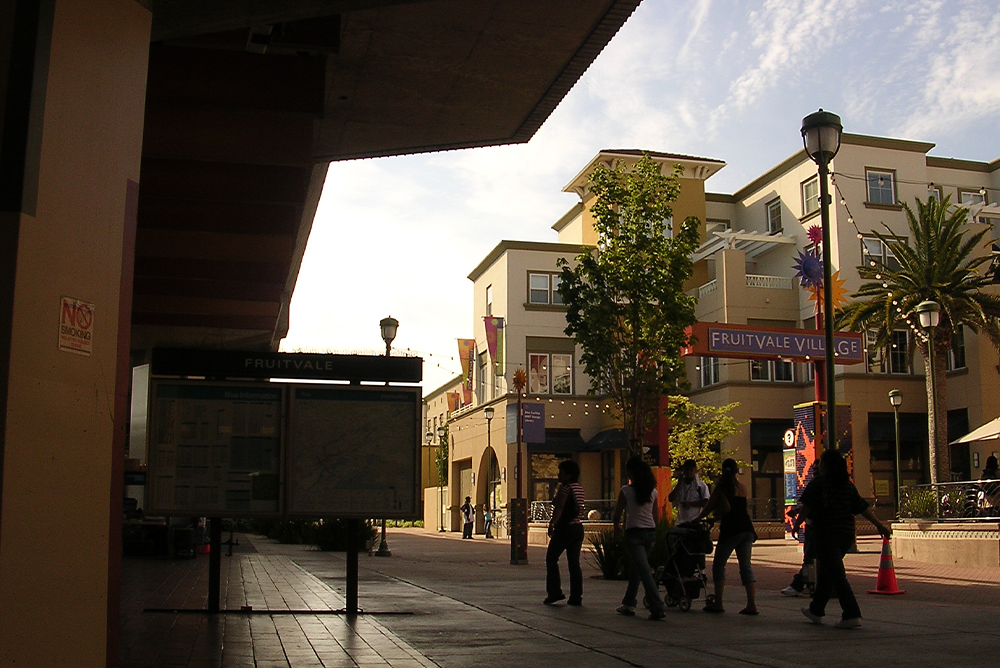
Compelled by Leila Mottley’s novel Nightcrawling, columnist Joe Mathews walked the real-life thoroughfares of her fictional East Oakland, and came home with questions. Courtesy of Wikimedia Commons (CC BY-SA 2.0).
Kiara Johnson, 17, lives at the Regal-Hi apartments on High Street in East Oakland—for now.
She doesn’t have the money for next month’s rent, which her landlord is doubling. She can’t rely on parents—her dad’s dead and her mom’s in prison. The bus pass she uses was stolen.
For work, she begs for more shifts in a liquor store. But that’s not enough for her to support her older brother, who won’t get a job, and to take care of Trevor, her 9-year-old neighbor, who is living alone because his mother has disappeared. So lately, Kiara has started doing sex work along the International Boulevard corridor.
How does she go on? How does she cope? She walks around Oakland, with Trevor or her friend Alé accompanying her. “When there is no choice, the only thing you have left to do is walk,” she says, later adding: “Out here, there’s a kind of stillness that comes with having nowhere to go.”
Kiara Johnson isn’t a real person. She’s the fictional central character and narrator of the novel—newly out in paperback—Nightcrawling, by Oakland native Leila Mottley, who turns 21 next month.
With the imprimatur of the Oprah Book Club, Nightcrawling has become a bestseller, with a page-turning plot that feels very of the moment, involving sex trafficking, housing displacement, mass incarceration, and a police scandal closely modeled on a real-life case in which an officer’s suicide exposed cops’ sexual abuse of a young girl.
But the book’s real magic is how, in a story full of so many horrors, Mottley, who served as the city’s youth poet laureate, manages to convey deep affection for Oakland and the people who struggle through life on its streets. Much of the book consists of Kiara, and other characters, taking buses or walking around the city.
I found the novel so compelling that I spent the better part of a day and a night walking the very same thoroughfares the fictional Kiara roams in East Oakland, a diverse and struggling side of the city that stretches from Lake Merritt down to San Leandro.
Nearly four years and a global pandemic have passed since Mottley wrote her manuscript, in the summer of 2019, just after she graduated high school. But the streets where Kiara spends her time have not much changed.
Starting from the Fruitvale BART station, I headed over to High Street, where Kiara lives.
It was just as Mottley describes it:
High Street is an illusion of cigarette butts and liquor stores, a winding rail to and from drugstores and adult playgrounds masquerading as street corners. It has a childlike kind of life, like the perfect landscape for a scavenger hunt … It is everything and nothing you’d expect with the funeral homes and gas stations, the street sprinkled in houses with yellow shining out the windows.
In the 2900 block, I came across a ramshackle apartment building with a name suspiciously similar to Kiara’s—the Royal-Hi, rather than the Regal-Hi of the novel. The Royal-Hi seemed in better shape. It didn’t have a swimming pool at all, much less one filled with poop, like its fictional counterpart.
At the top of High, I cheated, taking a rideshare to San Antonio Park, which is as lovely as Kiara describes it in the book. Then I began a long walk, heading more than 50 blocks down International Boulevard, deeper and deeper into East Oakland.
I didn’t spot any sex workers. I did encounter various men, some of whom appeared to be living on the streets. And I saw the mix of taquerias, churches, liquor stores, and housing Mottley depicts—”International Boulevard is a weave through every kind of East Oakland living,” as Kiara narrates it.
I didn’t see the wide variety of people that the novel describes on the sidewalks. Business owners told me that street traffic hasn’t really recovered from COVID.
By early evening, I was feeling tired, and hot, even after a day far cooler than what I’m used to back home in Southern California. But I kept walking, as Kiara advises: “I think about each step and repeat to myself: heel, toe, heel, toe. Makes it easier.”
The setting got rougher when, still on International, I crossed 70th Avenue, entering the part of Oakland the locals call “Deep East.” The sidewalks were riddled with cracks. There were more people living in tents, and far more trash. Damaged cars, some obviously undrivable, seemed to take up every available street parking space.
When I turned down 75th Avenue, on my way to my walk’s conclusion at the Coliseum BART Station, I was literally walking on broken glass. I couldn’t take more than a step or two on the sidewalk without having to dodge it. And so, I started to walk on the street, trying to stay out of the way of cars driving past.
There were people around, mostly on the corners or sitting in front of small homes, but I felt isolated. I could understand why Kiara describes a walk not far from here as “the closest thing to being a live ghost. Disappearing into roadside trash and trees that somehow figures out how to grow in California’s eternal drought.”
Why can’t these streets be in better repair? Why can’t these neighborhoods have more resources? Why do we tolerate so much pain in the lives of others? In the novel, Kiara, when asked such questions by a friend, is dismissive. “Life won’t give you reasons for none of it,” she says.
She has walked every street of her city, and she knows that danger and desire are all just facts of life. “Oakland contains it all,” she says. “Heartbreak and yearning.”




Send A Letter To the Editors